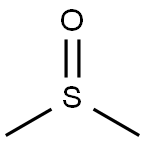Gramine
Synonym(s):3-(Dimethylaminomethyl)indole;Donaxine;NSC 16892
- CAS NO.:87-52-5
- Empirical Formula: C11H14N2
- Molecular Weight: 174.24
- MDL number: MFCD00005629
- EINECS: 201-749-8
- SAFETY DATA SHEET (SDS)
- Update Date: 2024-12-18 14:08:57

What is Gramine?
Chemical properties
?3-(Dimethylaminomethyl)indole [87-52-5], gramine, C11H14N2, Mr 174.25, mp 138 – 139 ℃, forms colorless needles. The compound is soluble in ethanol, diethyl ether, and chloroform and insoluble in water. It can be synthesized from indole by the Mannich reaction with dimethyl-amine and formaldehyde. Gramine is used to synthesize D,L-tryptophan, the plant growth regulators indole-3-acetic acid and indole-3-butanoic acid as well as the intermediate tryptamine.
The Uses of Gramine
Reactant for preparation of:
- Dopamine D2 receptor antagonists
- Anti-malarial drugs
- 5-indolyl-Mannich bases
- Proliferation inhibitors
- Inhibitors of human mast cell chymase
- Preparation of DL-tryptophan
- Potential detoxification inhibitors of the crucifer phytoalexin brassinin
- 3-vinylindoles
- Serotonin 5-HT6 receptor ligand templates
- Selective protein kinase c delta (PKCδ) down regulators
What are the applications of Application
Gramine is a useful compound for the preparation of D2 receptor antagonists
Definition
ChEBI: Gramine is an aminoalkylindole that is indole carrying a dimethylaminomethyl substituent at postion 3. It has a role as a plant metabolite, a serotonergic antagonist, an antiviral agent and an antibacterial agent. It is an aminoalkylindole, an indole alkaloid and a tertiary amino compound. It is a conjugate base of a gramine(1+).
General Description
This substance is a primary reference substance with assigned absolute purity (considering chromatographic purity, water, residual solvents, inorganic impurities). The exact value can be found on the certificate. Produced by PhytoLab GmbH & Co. KG
storage
Room temperature
Purification Methods
Crystallise gramine from diethyl ether, ethanol or acetone. It sublimes at 59o/0.001mm. The hydrochloride crystallises from EtOH/Et2O with m 190.5-191.0o(dec). [Culvenor et al. Aust J Chem 17 1301 1964, Beilstein 22 III/IV 4302, 22/10 V 25.]
Properties of Gramine
| Melting point: | 132-134 °C (lit.) |
| Boiling point: | 295.23°C (rough estimate) |
| Density | 1.0715 (rough estimate) |
| refractive index | 1.5500 (estimate) |
| Flash point: | 167 °C |
| storage temp. | Refrigerator (+4°C) |
| solubility | almost transparency in Methanol |
| form | Powder |
| pka | 17.00±0.30(Predicted) |
| color | Beige |
| Water Solubility | PRACTICALLY INSOLUBLE |
| Merck | 14,4533 |
| BRN | 140521 |
| CAS DataBase Reference | 87-52-5(CAS DataBase Reference) |
| NIST Chemistry Reference | 1H-Indole-3-methanamine, N,N-dimethyl-(87-52-5) |
| EPA Substance Registry System | 1H-Indole-3-methanamine, N,N-dimethyl- (87-52-5) |
Safety information for Gramine
| Signal word | Warning |
| Pictogram(s) |
 Exclamation Mark Irritant GHS07 |
| Precautionary Statement Codes |
P264:Wash hands thoroughly after handling. P264:Wash skin thouroughly after handling. P270:Do not eat, drink or smoke when using this product. P280:Wear protective gloves/protective clothing/eye protection/face protection. P301+P312:IF SWALLOWED: call a POISON CENTER or doctor/physician IF you feel unwell. |
Computed Descriptors for Gramine
New Products
Tert-butyl bis(2-chloroethyl)carbamate 4-Methylphenylacetic acid N-Boc-D-alaninol N-BOC-D/L-ALANINOL 3-Morpholino-1-(4-nitrophenyl)-5,6-dihydropyridin- 2(1H)-one Furan-2,5-Dicarboxylic Acid Tropic acid DIETHYL AMINOMALONATE HYDROCHLORIDE 1,1’-CARBONYLDIIMIDAZOLE R-2-BENZYLOXY PROPIONIC ACID 1,1’-CARBONYLDI (1,2-4 TRIAZOLE) N-METHYL INDAZOLE-3-CARBOXYLIC ACID (2-Hydroxyphenyl)acetonitrile 4-Bromopyrazole 5-BROMO-2CYANO PYRIDINE 5,6-Dimethoxyindanone 5-broMo-2-chloro-N-cyclopentylpyriMidin-4-aMine 2-(Cyanocyclohexyl)acetic acid 4-methoxy-3,5-dinitropyridine 2-aminopropyl benzoate hydrochloride 1-(4-(aminomethyl)benzyl)urea hydrochloride diethyl 2-(2-((tertbutoxycarbonyl)amino) ethyl)malonate tert-butyl 4- (ureidomethyl)benzylcarbamate Ethyl-2-chloro((4-methoxyphenyl)hydrazono)acetateRelated products of tetrahydrofuran








You may like
-
 Gramine CAS 87-52-5View Details
Gramine CAS 87-52-5View Details
87-52-5 -
 Gramine CAS 87-52-5View Details
Gramine CAS 87-52-5View Details
87-52-5 -
 Gramine CAS 87-52-5View Details
Gramine CAS 87-52-5View Details
87-52-5 -
 1975-50-4 98%View Details
1975-50-4 98%View Details
1975-50-4 -
 2-HYDROXY BENZYL ALCOHOL 98%View Details
2-HYDROXY BENZYL ALCOHOL 98%View Details
90-01-7 -
 14714-50-2 (2-Hydroxyphenyl)acetonitrile 98+View Details
14714-50-2 (2-Hydroxyphenyl)acetonitrile 98+View Details
14714-50-2 -
 118753-70-1 98+View Details
118753-70-1 98+View Details
118753-70-1 -
 733039-20-8 5-broMo-2-chloro-N-cyclopentylpyriMidin-4-aMine 98+View Details
733039-20-8 5-broMo-2-chloro-N-cyclopentylpyriMidin-4-aMine 98+View Details
733039-20-8